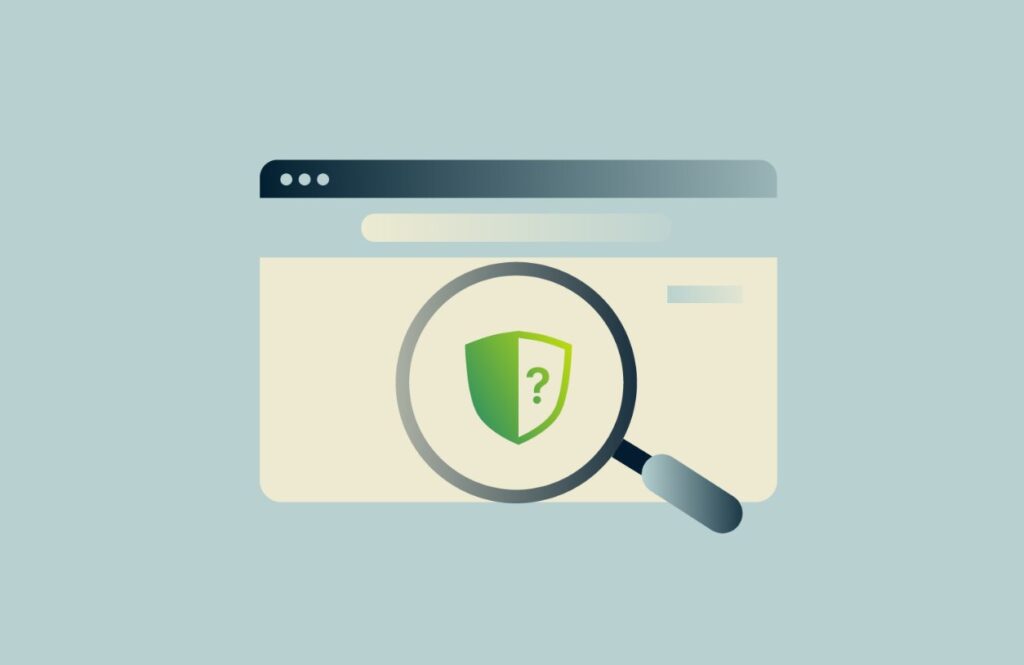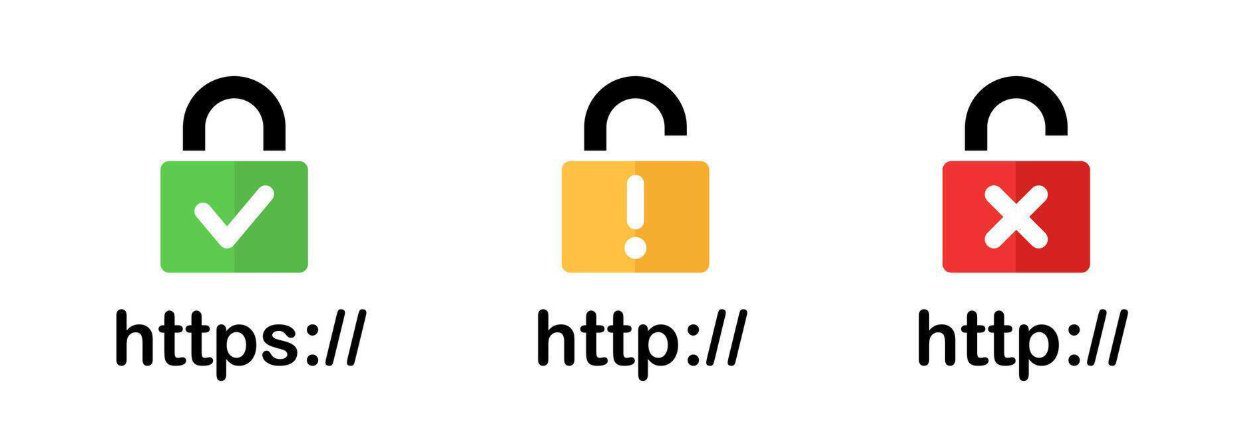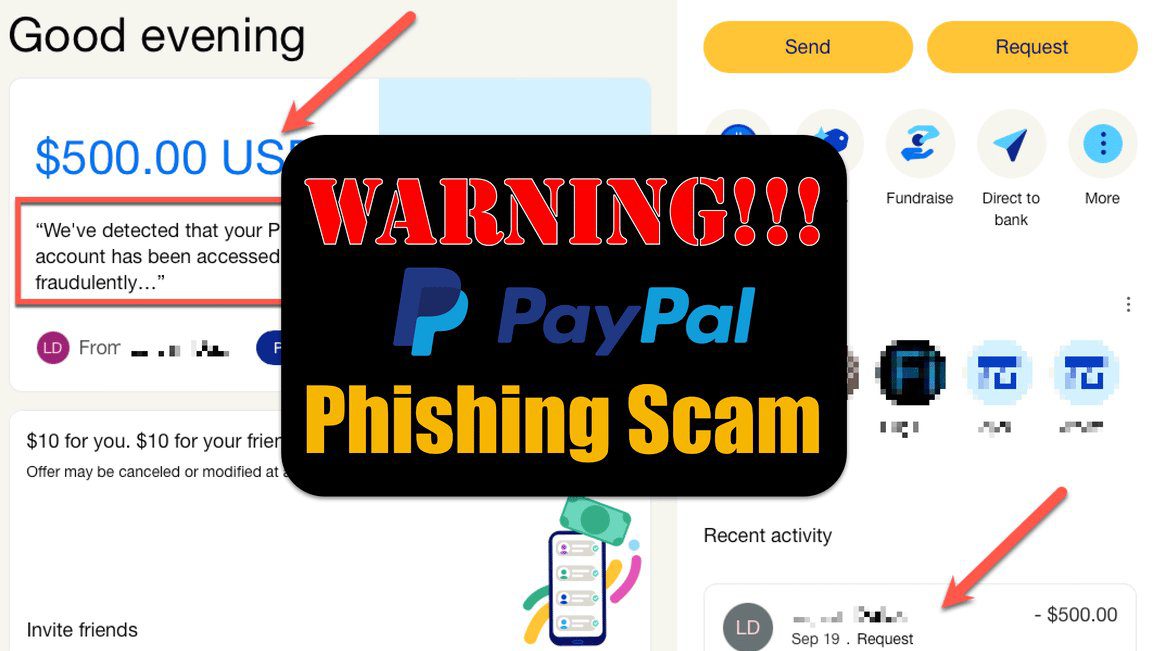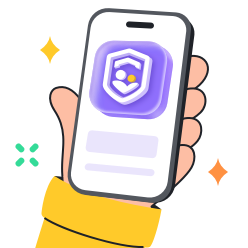Internet ofrece un sinfín de oportunidades, pero también entraña riesgos tras cada clic. Una rápida comprobación de la seguridad de un sitio web puede evitar que los usuarios caigan en engaños y virus. Verificar la validez del sitio garantiza la protección de los datos personales y la eliminación de pérdidas en el ámbito del cibercrimen. El Informe sobre Delitos en Internet de 2023 del FBI indica que las víctimas de fraude en línea robaron más de 12.500 millones de dólares en tan solo un año. Por ello, resulta urgente comprobar la seguridad de un sitio web antes de confiar en él.
¿Qué es una comprobación de seguridad de un sitio web y por qué es importante?
Un verificador de seguridad web ayuda a comprobar la seguridad de un sitio web antes de interactuar con la plataforma. Su objetivo es determinar si un sitio es seguro o está infectado con malware. Sin embargo, los estafadores se esfuerzan por dar a sus sitios una gran credibilidad. Por lo tanto, es necesario ser minucioso al comprobar la seguridad de cualquier plataforma.
La verificación incluye el análisis de la estructura del sitio, su código, diseño y la autoridad certificadora. A partir de ahí, define el uso de conexiones cifradas HTTPS. Además, comprueba la autenticación del dominio, la reputación en línea y realiza un análisis de malware. Estos parámetros se utilizan para determinar la credibilidad.
Los sitios web inseguros exponen a los usuarios a numerosos peligros en internet.




- Sitios web fraudulentos: Los sitios web de phishing se crean para parecer legítimos, mediante los cuales el estafador recopila información como nombres de usuario, contraseñas o datos de tarjetas de crédito. Por calificación , un correo electrónico bancario falsificado puede parecer auténtico y transferir credenciales a los estafadores.
- Descargas maliciosas: Los sitios web no seguros fomentan la descarga de archivos maliciosos, como virus, ransomware o spyware. Con un solo clic, un dispositivo puede infectarse y perder datos de forma permanente.
- Tiendas en línea falsas: Se sabe que las empresas fantasma que operan en el comercio electrónico, haciéndose pasar por tiendas en línea falsas, promocionan ofertas irreales. El cliente realiza el pago y no recibe el producto. Estas páginas web desaparecen tras el robo de las transacciones.
- Estafas de inversión: Los usuarios caen en las redes de sitios web que prometen ganancias rápidas y beneficios garantizados. Recogen depósitos, pero al final desaparecen con el dinero.
- Seguimiento no autorizado: Numerosos sitios web dudosos utilizan esta técnica para recopilar información sobre los patrones de navegación sin el conocimiento del usuario. Esto viola la privacidad al crear perfiles de usuarios sin su consentimiento.
Los sitios web maliciosos tienen efectos a largo plazo. Pueden perjudicar el rendimiento de los sistemas y revender información robada. la red oscurao suplantar la identidad de la víctima utilizando su nombre.
Indicadores clave de un sitio web seguro
Si bien nunca se puede tener la certeza absoluta de la seguridad de ninguna plataforma, existen algunos indicadores que pueden brindar tranquilidad. Estos indicadores demuestran calificación confiabilidad de forma visual, técnica y conductual.
¡Protege sus ojos, déjalos libres!
El candado HTTPS
El icono del candado, junto a la URL, indica que se ha utilizado HTTPS. HTTPS significa Protocolo de Transferencia de Hipertexto Seguro. Este protocolo codifica la información que se envía entre el servidor y el navegador. Esta seguridad garantiza que no sea interceptada por delincuentes.
Por ejemplo, HTTPS cifra detalle de la tarjeta cuando los introducimos durante el proceso de compra. Sin HTTPS, la información se envía en texto plano a los servidores y puede verse comprometida.
Sin embargo, HTTPS no es infalible. La presencia de un certificado HTTPS no impide que personas malintencionadas se apoderen de un sitio web, lo que significa que debe combinarse el candado con otras medidas de seguridad.




Nombres de dominio y URL reales
El fraude suele detectarse a través del nombre de dominio. Los sitios web fraudulentos imitan a los sitios web auténticos mediante técnicas de typosquatting. Amazon o PayPal son, por ejemplo, imitadas por amaz0n.com o paypai.com.
Comprueba la ortografía, los caracteres adicionales y las extensiones. La mayoría de estas estafas utilizan dominios extraños como .xyz o .top. Siempre es importante verificar con el dominio oficial de la marca.
Políticas de privacidad y condiciones de servicio fáciles de entender.
Existen plataformas confiables que definen el uso de la información personal. Sus políticas de privacidad especifican la recopilación, el almacenamiento y la seguridad de la información. Los sitios web fraudulentos generalmente no incluyen estas secciones o proporcionan información ambigua.
La ausencia de una declaración de privacidad, o una declaración breve y confusa, es una clara señal de alerta. Las empresas de buena reputación cuentan con políticas exhaustivas que están a disposición de todos.
Diseño profesional y mínimos errores
La apariencia de los sitios web inseguros suele ser de baja calidad. Las páginas falsas tienen diseños defectuosos, logotipos poco claros, faltas de ortografía y fotos de archivo no originales.
Las empresas profesionales invierten en diseños fáciles de usar. Una navegación incorrecta, enlaces rotos o ventanas emergentes demasiado frecuentes calificación una baja calidad e incluso pueden ser fraudulentas.
Fácil contacto y atención al cliente
Los servicios legítimos tienen direcciones claras, correos electrónicos funcionales o números de soporte verificados. Los sitios web fraudulentos suelen ocultar la información de contacto o mostrar información que no se puede validar.
En caso de imposibilidad de establecer comunicación directa o cuando no exista apoyo que implique contacto humano real, desconfíe.
Valoración de los usuarios y reputación en línea
La evaluación de la confianza se ve reforzada por las opiniones de los clientes recogidas en fuentes independientes. En sitios web como Trustpilot o Better Business Bureau, existen reseñas basadas en experiencias reales.
El fraude se verifica mediante las constantes quejas por mercancía extraviada, servicios no prestados o cargos adicionales. Por el contrario, las empresas legítimas cuentan con reseñas positivas a largo plazo y una actitud abierta al responder a comentarios negativos.
Las mejores herramientas y servicios para verificar la seguridad de los sitios web
Existen numerosas herramientas para verificar la seguridad de los sitios web que ofrecen métodos sistematizados de autenticación. Los usuarios pueden utilizar bases de datos, escáneres y servicios de calificación internacionales para garantizar su seguridad.
Utilizar la función de Navegación segura de Google para comprobar la seguridad de los sitios web.
La función Navegación segura de Google utiliza una lista negra de sitios web dañinos para detectar páginas web peligrosas. alertas a los usuarios sobre el riesgo de cargar páginas web maliciosas.
Los usuarios también pueden recurrir a la herramienta Informe de Transparencia de Google. Al introducir una URL, se obtiene información sobre el sitio infectado o incluido en la lista negra. Este servicio gratuito está disponible para todos y se actualiza con frecuencia.
Considerándolo todo, FirefoxLos navegadores Chrome y Edge incorporan la función de Navegación Segura. Estos navegadores bloquean el acceso o emiten una advertencia en cuanto los usuarios se encuentran en riesgo. Esto ayuda a prevenir el acceso involuntario a sitios web peligrosos.
Comprobación de seguridad del sitio web con escáneres de seguridad
Los escáneres de seguridad analizan los sitios web en busca de malware y vulnerabilidades. Realizan pruebas que determinan la seguridad total de cualquier plataforma que se escanee con ellos.
- VirusTotal: Ofrece un análisis gratuito de sitios web, archivos y enlaces. Utiliza decenas de motores antivirus para identificar cualquier amenaza. La página de resultados muestra si un servicio detectó una URL como sospechosa.
- Sucuri SiteCheck: Se calificación en el malware y las listas negras. También identifica vulnerabilidades de seguridad, como plugins obsoletos. Un informe limpio de Sucuri garantiza mayor confianza.
- Norton Navegación segura: Norton es una de las herramientas de ciberseguridad. Ofrece calificaciones de seguridad confiables y reseñas de clientes.
Dr.Web En Línea URL Check: Un escáner de seguridad que es una aplicación basada en antivirus que autentica las URL.
El escaneo múltiple es más calificación , ya que los distintos motores son sensibles a diferentes amenazas.
Verificador de sitios web falsos que utiliza herramientas de reputación
El análisis de reputación es eficaz a la hora de generar confianza basándose en la información global de los usuarios.
- Web of Trust (WOT): Utiliza un modelo basado en la comunidad. Las calificaciones miden la fiabilidad, la seguridad infantil y la privacidad de datos de cada sitio web.
- Scamadvisor: Analiza sitios web mediante un algoritmo. Tiene en cuenta la antigüedad del dominio, la información de alojamiento y la valoración de los usuarios.
- Trustpilot: Opiniones de consumidores verificados. Se pueden activar las notificación cuando hay quejas sobre reembolsos, prestación de servicios o fraudes.
- BBB (Better Business Bureau): Proporciona acreditación y servicio de seguimiento de quejas a empresas legítimas en América del Norte.




Si varias fuentes calificación mal un sitio, deberías evitarlo.
Expansores de URL y comprobadores de enlaces
Los ciberdelincuentes pueden ocultar el destino de los enlaces acortados, como bit.ly o tinyurl. Utilizan esta técnica para camuflar redirecciones maliciosas. Por suerte, los programas para expandir URLs muestran el enlace real de antemano. CheckShortURL y Unshorten.it son las opciones más populares para este fin.
Además, organismos reguladores como la Junta de Clasificación de Australia o la USK en Alemania se centran en garantizar la seguridad en línea . La fiabilidad aumenta cuando los usuarios consultan guías de clasificación internacionales.
Comprobación de seguridad del sitio web con extensiones del navegador
Los navegadores cuentan con extensiones que proporcionan notificaciones de seguridad continuas al navegar por la web. Algunos ejemplos son:
- Bloqueadores de anuncios: Bloquean los anuncios maliciosos que conducen a sitios web inseguros.
- uBlock Origin y AdGuard: Estas son las mejores opciones cuando estás harto de las molestas ventanas emergentes en páginas web aleatorias.
- Extensiones antivirus: Muchos paquetes antivirus como McAfee WebAdvisor o Kaspersky ofrecen extensiones que evalúan las páginas web bajo demanda.
Elegir extensiones con buenas reseñas de editores reputados mejora la seguridad de la navegación diaria. Del mismo modo, evita las extensiones con valoraciones bajas o poco fiables, ya que pueden generar nuevos riesgos.
Comprobación de seguridad del sitio web para escenarios en línea específicos
Los riesgos varían según las actividades en internet. Por lo tanto, confiar en un verificador de seguridad web robusto garantiza una protección especial.
Compras seguras en línea
Los estafadores proliferan en tiendas en línea no verificadas. Comprueba siempre que el sitio web utilice HTTPS, independientemente de la página en la que te encuentres. Sin embargo, debes extremar las precauciones al realizar pagos.
Compara el dominio del minorista con grandes bases de datos. Presta atención a la ortografía y a las diferencias de dominio. Además, considera… medios de comunicación social y las reseñas de clientes sobre la tienda en diversos lugares.
Los clientes no deben dejarse engañar por ofertas poco realistas. Por ejemplo, los grandes descuentos en productos caros son trampas comunes. Además, la posibilidad de pagar mediante métodos seguros como PayPal o tarjetas de crédito ofrece una mayor protección contra el fraude. Asimismo, nunca envíe transferencias bancarias directas a desconocidos.




Seguridad de los sitios web de banca e inversión
Los sitios web de los bancos deben ser muy visitados. Nunca uses enlaces de correo electrónico; escribe siempre la dirección oficial de tu banco. La autenticación multifactor mejora la seguridad de tu cuenta.
Asegúrese siempre de que el candado certifique una conexión segura HTTPS. A continuación, verifique el certificado del dominio para comprobar la legitimidad de la autoridad. Los bancos nacionales suelen tener certificados con una larga vigencia.
Los inversores principiantes suelen ser víctimas de estafas financieras que involucran supuestas plataformas de inversión. Por lo tanto, verifique la información contactando a organismos reguladores financieros como la SEC de EE. UU. o la FCA del Reino Unido. Asimismo, no utilice la banca móvil en redes Wi-Fi públicas y proteja sus conexiones confidenciales mediante VPN.
Protección infantil: gestión del acceso y el contenido del sitio web
Los niños son muy vulnerables a los sitios web inseguros. Estos sitios web exponen a los usuarios a contenido dañino, depredadores y estafas financieras.
Para abordar estos problemas, los padres tienen que recurrir a herramientas como FlashGet KidsMediante estas herramientas, los padres pueden bloquear directamente el contenido dañino con las funciones de seguridad del navegador. También ofrece seguimiento de palabras clave, duplicación de pantalla en tiempo real e incluso una bloqueador de aplicacionesAsí, siempre podrás supervisar y restringir lo que tu hijo hace en internet para mantenerlo seguro.




Debe haber conversaciones continuas sobre la crianza digital. Los niños deben ser conscientes de los peligros como las personas desconocido en internet o las ofertas gratuitas. En definitiva, el mejor mecanismo de defensa es la incorporación de controles parentales y educación.
Conclusión
Los sitios web inseguros representan enormes riesgos para las personas, las familias y las empresas. El número de estafas, malware, robos de datos y suplantación de identidad aumenta a medida que los delincuentes utilizan sitios web sin protección. Por lo tanto, usar regularmente un verificador de seguridad web es la mejor manera de protegerse.
Medidas como la confirmación del uso de HTTPS, el seguimiento de dominios y la verificación de la reputación previenen numerosos fraudes. El alcance global de herramientas como Google Safe Browsing y VirusTotal, FlashGet KidsWeb of Trust refuerza su protección. Además, es necesario extremar las precauciones al realizar transacciones en línea o al permitir que los niños naveguen libremente por internet.
Los ciberdelincuentes se aprovechan de la confianza. La mejor manera de prevenir los robos en línea es estar siempre alerta. Los usuarios reducen considerablemente los riesgos con herramientas y precauciones modernas.
Preguntas más frecuentes
Los usuarios pueden verificar la seguridad con servicios gratuitos como Google Safe Browsing, VirusTotal y Scamadviser. A veces, los navegadores también incluyen advertencias sobre sitios maliciosos. Para mayor seguridad, conviene comprobarlo varias veces.
No todas son dañinas. Algunas ventanas emergentes permiten iniciar sesión, actualizar datos o escribir comentarios. Sin embargo, las ventanas emergentes no solicitadas que piden credenciales o información financiera sí son una señal de peligro.

